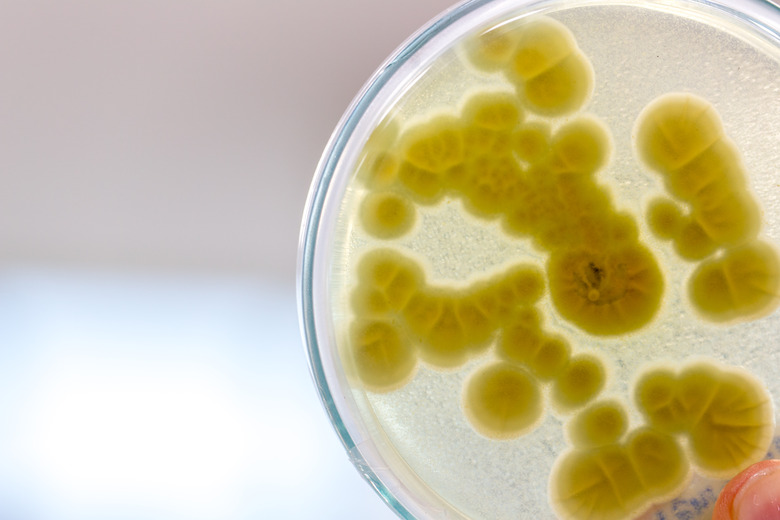The Effects Of Salt Concentration On Bacterial Growth
It's hard to imagine that anything survives in the deepest, darkest parts of the ocean or the hottest volcanos. However, some organisms thrive under these extreme conditions. One such condition is salinity, or saltiness. For bacteria, salt concentration plays an important role in cell growth.
TL;DR (Too Long; Didn't Read)
Some organisms called obligate halophiles require salt to grow in cell culture or to survive outside the laboratory. Halotolerant organisms don't require salt but can handle moderately salty environments. Non-halophiles do not grow in cell culture that contains salt or survive under salty conditions. Adding salt to culture medium is a simple way for scientists to select against non-halophiles in the laboratory.
Growing Bacteria in the Lab
Growing Bacteria in the Lab
When it comes to growing bacteria in a laboratory, scientists provide six basics to ensure cell growth: nutrient-rich culture medium, appropriate temperature, proper pH, metal ions and – sometimes – salt, gas (oxygen or carbon dioxide) and water. Even with careful preparation, some organisms such as symbiotic bacteria, which naturally rely on a host to survive, still present challenges when scientists attempt to grow them in the laboratory.
What About Salt?
What About Salt?
Sodium chloride, or salt, is a nutrient that affects different organisms in different ways. For example, some organisms are obligate halophiles, which means they require salt to survive and will lyse, or break open, if the salt level drops to a low level. Other halophilic organisms are merely halotolerant, which means they don't need salt to survive but can tolerate moderately salty environments. Halophiles belong to a larger group called extremophiles who thrive under extreme conditions.
Scientists categorize obligate halophiles by how salty they prefer their environments. Slight halophiles thrive in environments that contain 1 to 6 percent salt. Moderate halophiles prefer 6 to 15 percent salt. Extreme halophiles enjoy the saltiest environments of all at 15 to 30 percent salt. Scientists use these categories to prepare culture medium perfectly suited for the organisms they want to grow. Halotolerant organisms prefer salt-free environments but can survive at slight or moderate salt levels.
For non-halophiles, salt can be deadly. When scientists want to inhibit the growth of non-halophiles in the laboratory, they include salt in the culture medium to prevent non-halophiles from growing. This is called a selective medium.
Halophilic Organisms in Real Life
Halophilic Organisms in Real Life
Halophilic organisms thrive in expected and unexpected places outside the laboratory. You might encounter halophiles in brine ponds, salt mines, coastal and deep-sea areas, and deserts. Even some foods make decent environments for halophiles to take up residence, including soy sauce, anchovies and sauerkraut.
Salt is an important nutrient for growing bacteria in culture because it allows scientists to select for or against halophilic organisms. Knowing how salt differentially affects organisms is particularly valuable for people who study extremophiles.
Cite This Article
MLA
Mayer, Melissa. "The Effects Of Salt Concentration On Bacterial Growth" sciencing.com, https://www.sciencing.com/effects-salt-concentration-bacterial-growth-5924409/. 7 May 2018.
APA
Mayer, Melissa. (2018, May 7). The Effects Of Salt Concentration On Bacterial Growth. sciencing.com. Retrieved from https://www.sciencing.com/effects-salt-concentration-bacterial-growth-5924409/
Chicago
Mayer, Melissa. The Effects Of Salt Concentration On Bacterial Growth last modified March 24, 2022. https://www.sciencing.com/effects-salt-concentration-bacterial-growth-5924409/
